The three best climbing shoulder exercises
It is the end of the day. You are tired and beat, but you decide to give it one last go on your project. You get to the crux move and give it everything you’ve got. Suddenly you feel a sharp pain in your shoulder. You know that you likely injured your shoulder. What happened and what could you have done to prevent this?
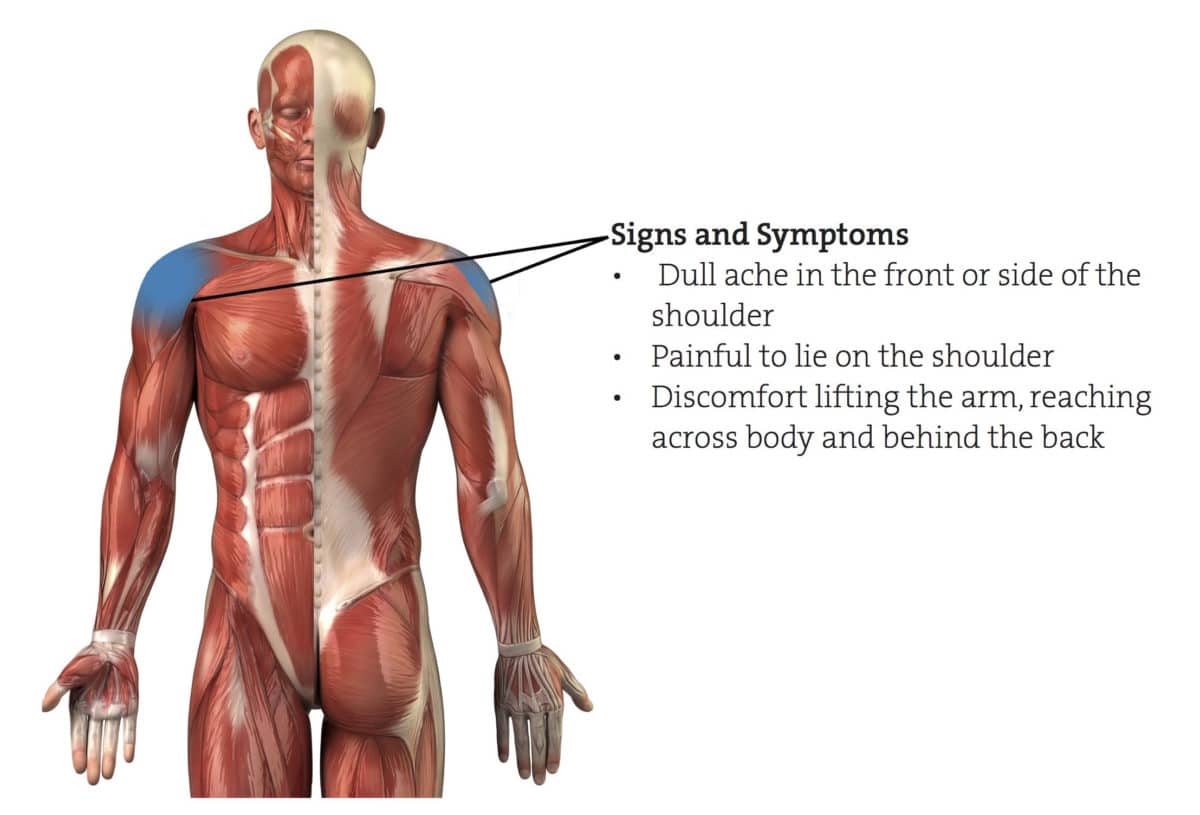
The tendons in the shoulder slide through a very narrow passageway and attach to the shoulder bone. Impingement occurs when the space between the bones in this passageway is reduced. This can occur from repetitively moving the shoulder into a stressful or suboptimal position. When this occurs, the bones in the shoulder pinch down on the tendons and cause shoulder impingement. You should be aware of the dangerous movements that can lead to shoulder impingement. These movements include hanging on your arms during rest stances, climbing with a hunched posture and strenuous overhead reaching.
To avoid this injury from occurring you can do these simple exercises below.
Exercises are demonstrated by professional climbers Sasha DiGiulian and Josh Levin.
Band Wrap Instructions
- Hold a full length Theraband in front of your stomach.
- Wrap the band around your back 1 to 2 times depending on the resistance you desire and the size of your midsection.
- Pull each end of the band in front of you crossing and forming a cross.
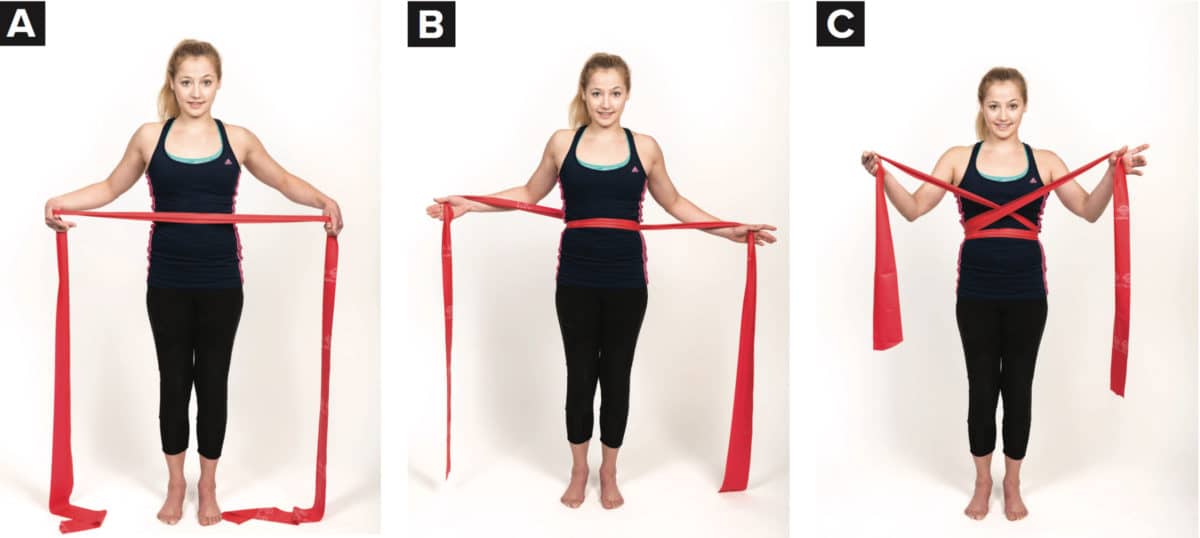
Bent Over Letter T, Y and L
Start position: Once you have wrapped the full length resistance band around your torso you can get into position for the three exercises. Bend your knees and hips and lean your trunk forward to approximately 45 degrees. The closer to the floor that you can angle your trunk, the more challenging the exercise will be. This is the most effective way to wrap the resistance band to perform these exercises. These exercises activate the middle trapezius (T), lower trapezius (Y) and the rotator cuff (L) muscles that provide support and protect your shoulder while climbing. The bent knee and forward trunk for position simulates more closely the body during overhang climbing. Perform for 3 sets of 8 repetitions once per day.
Bent Over Letter T
A. Start with the arms straight down by your side and palms rotated forward. B. Engage your shoulder blade muscles and bring your arms into the air to form the letter T. Make sure that the thumbs stay pointed into the air.
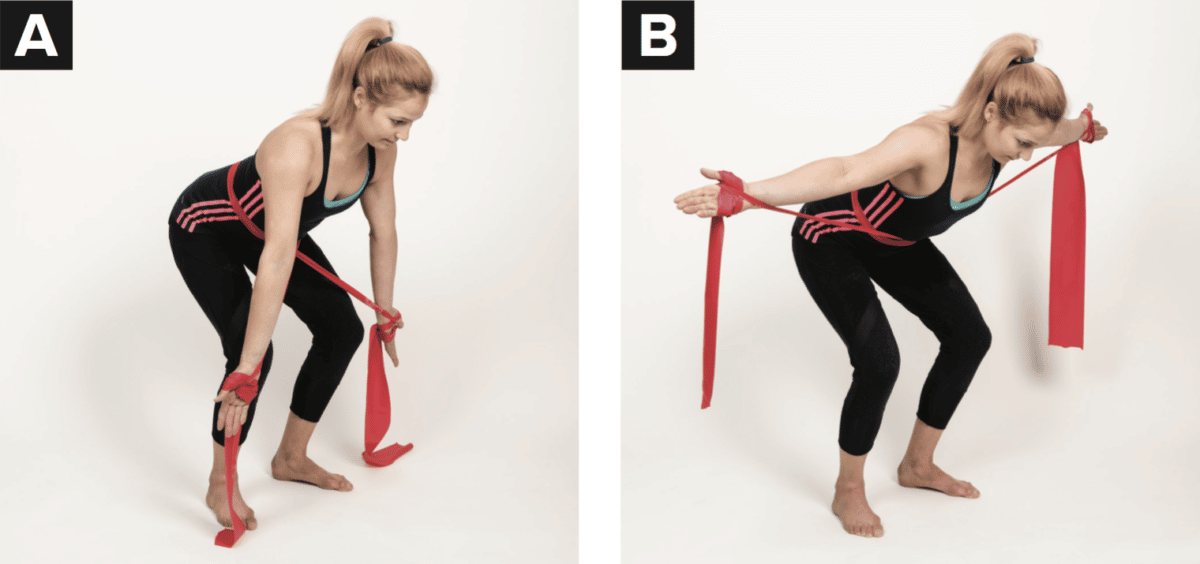
Bent Over Letter Y
A. Start with the arms straight down by your side and palms rotated forward. B. Reach overhead with thumbs up and with straight arms to form the letter Y. Squeeze your shoulder blades together and downward throughout the motion.
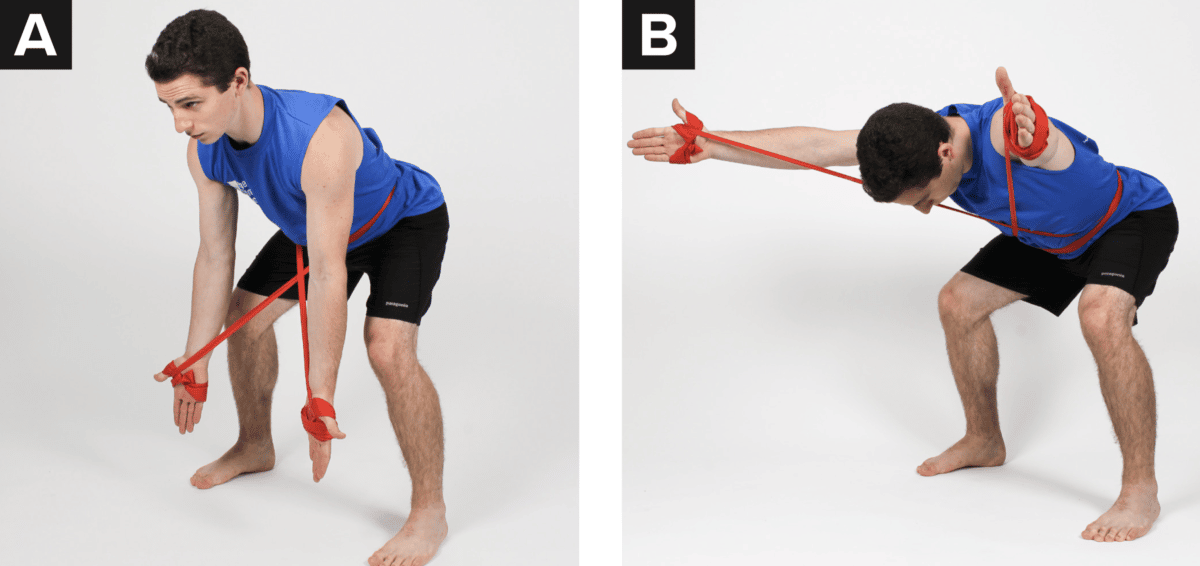
Bent Over Letter L
A. Start with your elbows bent at 90 degrees and raised to shoulder height. Rotate your palms down so that they are facing the ground. B. Rotate your hands and shoulder backwards forming the letter L with each arm. Make sure the shoulder rotates on a perfect axis and the elbow does not deviate up or down during the exercise.
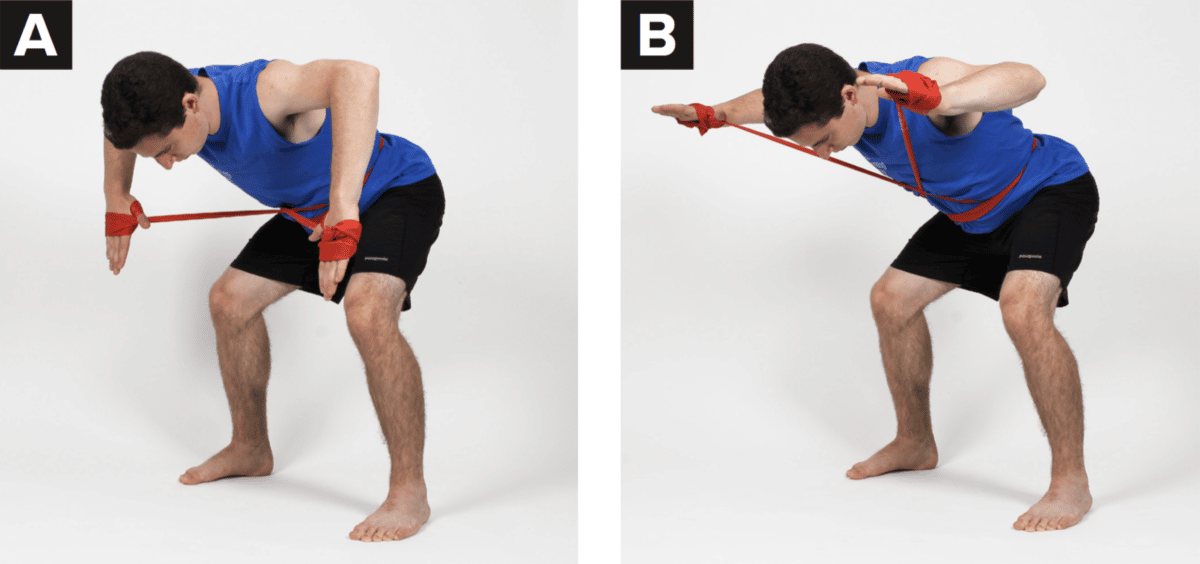

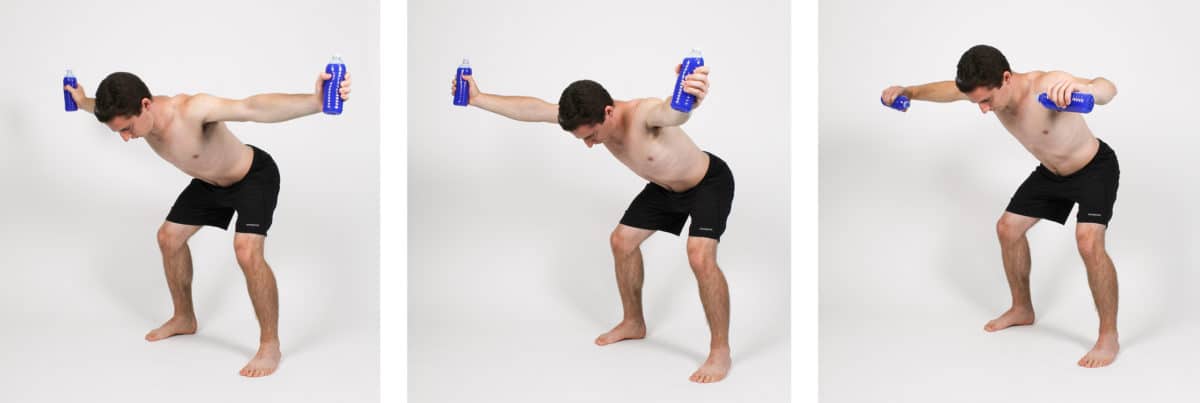
- Disclaimer – The content here is designed for information & education purposes only and the content is not intended for medical advice.


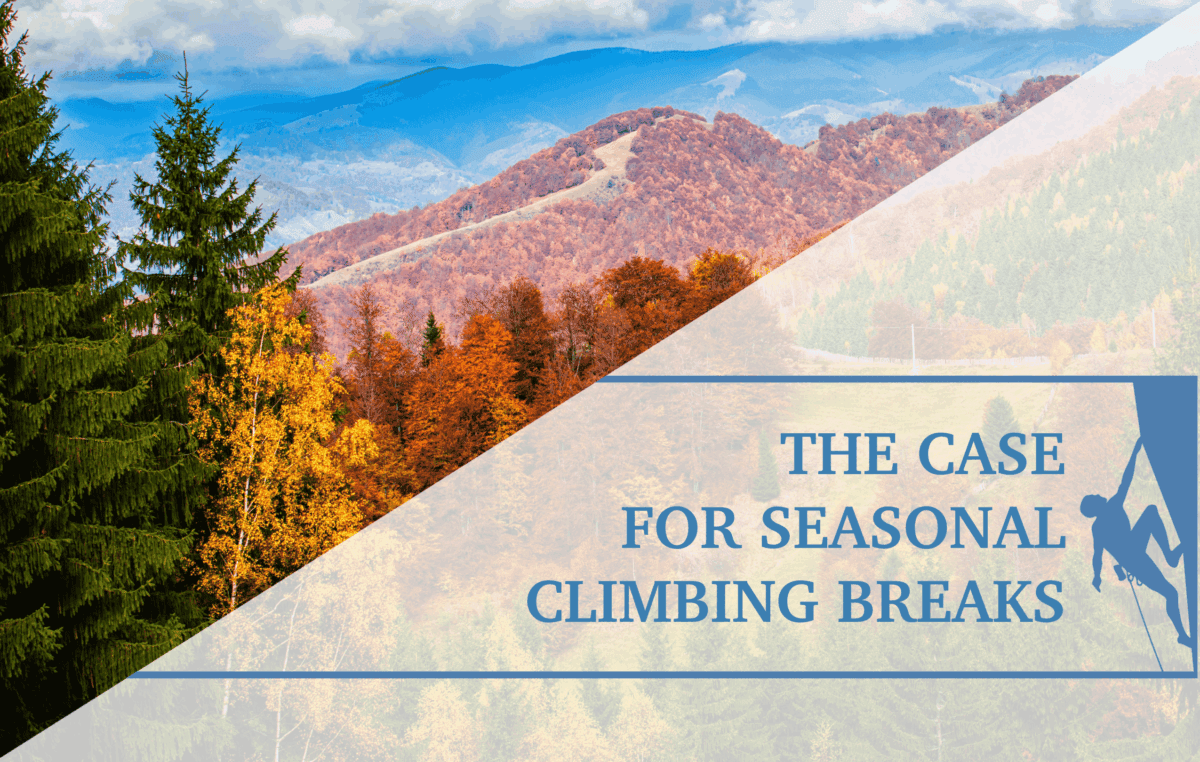


Interesting exercises, thanks. One question: why is wrapping the band round the torso preferable to, say, standing on it?
Wrapping the band around your waist forces you to engage your core muscles to stabilize the band. If you don’t tighten your core, the band will slip. This creates a connection between your core and your shoulder blade muscles that is essential for climbing. The torso wrap also gives the climber the ability to perform advanced exercises such a single leg balance, flagging etc… with the band wrapped.
Thank you for these! One other question – is it ok to do these exercises if you already have a shoulder impingement? I have been doing my physical therapy exercises for about 1 year (some are similar), with decent improvement, and I’d like to try these three.
In the sequence of rehabilitating shoulder impingement, strength exercises such as this should only be done after full range of motion is restored. Then they should be added sequentially based on difficulty. This exercise is of moderate difficulty and should be started only after performing strength exercises of minimal difficulty such as rotating a resistance band at the waist and performing rows that are below shoulder height. There also should be no pain or soreness during or after performing the exercise.
[…] Full Article: The Climbing Doctor Shoulder Exercises […]
What type of resistance band do you advice? I’m looking into buying one with the right resistance level and I’m not sure which I should get. Suppliers use different colors, so could you give an indication on resistance in kg’s?
Below is a chart for Theraband based on research that shows the resistance in pounds based on the elongation of the band:
https://theclimbingdoctor.com/wp-content/uploads/2016/11/post-2-126111825372.jpg
What if you are feeling these this symptoms already, is it safe to start these exercises or wait until I am no longer feeling this?
Hi Nate,
If you are in pain, it is often recommended to seek the attention of a medical professional. However, when constructing a rehabilitation plan for yourself, it is important to know the sequence of exercises. This is a Level 2 Strength exercise in the Rock Rehab Pyramid. Level 1-3 Mobility and Level 1 Strength should all performed pain-free prior to performing this exercise for rehabilitation. Click here and watch the attached video for more information on how to structure your rehab program.
What number of reps/sets do you recommend? Do you recommend adjusting the resistance so that you feel a “burn” in a certain number of reps?
The number of sets and reps depend on your goals. For example on a non-training day, you will want to perform the exercises to fatigue to build either power, strength or endurance. See below:
Boulderer: 3 sets of 4-6 repetitions performed quickly for power
Sport Climber: 3 sets of 6-15 depending on training goals
Traditional Climber: 3 sets of 15 repetitions for endurance
If you will be performing the exercises for muscle activation prior to climbing it is recommended anecdotally to perform them not to fatigue, just feel the burn, for 30 seconds duration 3 sets.
So if I am feeling the pains listed above in the shoulder. Would that be shoulder impingement?
The signs and symptoms are just subjective reports. In order to confirm the diagnosis of impingement, the subjective reports must be correlated with objective tests. The two most common objective tests that a medical practitioner will perform to “rule in” the diagnoses of shoulder impingement are the “Neer’s” and “Hawkins Kennedy” test. These two tests are shown in two videos below.
Neer’s test: https://youtu.be/bXA8cblZUok
Hawkins Kennedy Test: https://youtu.be/6GkKB2oXi3o